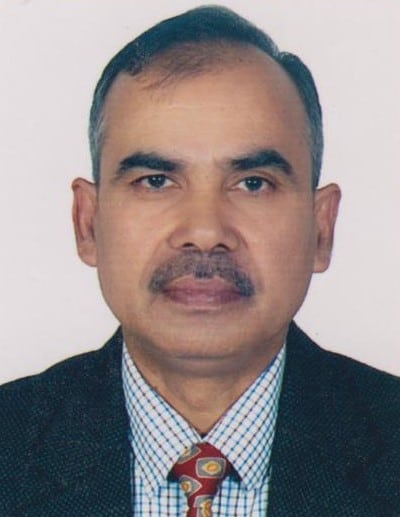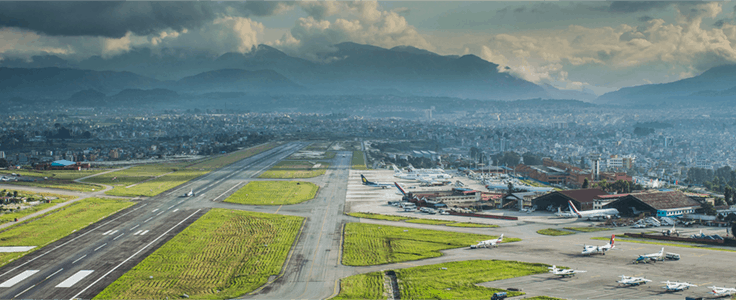An interview with Rajan Pokhrel, the recently appointed Director-General of the Civil Aviation Authority of Nepal
 Q: As the DGCA of CAA, Nepal, what are your significant challenges for CAAN and the future initiatives that CAAN is embarking upon over the next few years?
Q: As the DGCA of CAA, Nepal, what are your significant challenges for CAAN and the future initiatives that CAAN is embarking upon over the next few years?
A: Civil aviation in Nepal has been expanding rapidly in recent years. The rate of growth of air traveller has increased by 13.85 in the international sector and 15.45 in the domestic sector in the year 2018 compared to the previous year. CAA Nepal has the responsibility of regulation of civil aviation sector as well as operations of aerodromes and air navigation services. In this context the major challenges facing us are the continuous improvement of aviation safety, increase capacity and develop aviation infrastructure to cope with this growth.
The capacity constraints in the area of safety oversight, especially the hiring and retention of qualified safety oversight Inspectors, is a major challenge being faced by many developing countries, and we are not an exception. We have been working together with industry partners and regional and international organizations to overcome this constraint.
At present, there is only one international airport and 32 operational domestic airports. However, air transport activities in Nepal are mainly concentrated in Tribhuvan International Airport, located at capital city Kathmandu. Due to the surrounding topography of Kathmandu valley, the amount of air traffic that can be handled here is limited. Therefore, two additional international airports namely – Gautam Buddha International Airport (GBIA) and Pokhara International Airport are being constructed. To increase the ATC capacity, satellite-based RNAV flight procedures have been established and two new MSSR Mode-S have been installed bringing about two third of Nepalese sky under ATC surveillance.
Most of the domestic airports are very small and located in high altitude mountainous terrain where small twin-engine aircraft are operating passenger flights. It is not practicable to install required navigation facilities in these “altiports”. Some of these altiports can’t even provide the option of missed approach thus requiring pilots to be highly alert all the time. So, we have implemented specific requirements regarding the qualification of pilots to operate in these altiports.

Q: Since the last ICAO USOAP audit, are you satisfied with the EI result? What are the key safety issues that need to be resolved in your view? What are your near time and mid-term priorities?
A: The ICAO ICVM 2017 audit covered four areas namely LEG, ORG, OPS and AIR. Nepal has performed reasonably well in LEG, OPS and AIR, our overall EI level has increased to above the ICAO Global Aviation Safety Plan target. The improvement in safety performance is really encouraging. We are confident that once all the areas, are audited again, our EI level will be much higher. As regards to the question of satisfaction with the results, ‘satisfaction’ is a relative term. There can never be an absolute satisfaction or the result will be only stagnation. Maintaining or increasing the pace of improvement is what we aspire for. Our past performance, together with its recognition in the form of an ICAO President of Council Certificate, has boosted our vigor,
encouraging us to do better. We definitely shall achieve more overcoming all the existing and upcoming challenges.
In my opinion, the key safety issue that needs to be resolved is the number of accidents with small aeroplane and helicopters that mostly operate in logistic and rescue operations in the mountainous region. We have been working closely with the industry over the last five years to reduce these accidents and our collaborative efforts have produced some positive results. The fatality rate in accidents of small aircraft with MTOW 5700 kg or less has significantly dropped during the last five years. Whereas the fatality rate in helicopter operations, which is still in average five fatalities per year, is the area of our concern. Compared to the annual traffic growth, the continuous drop in the fatality rate indicates the overall improvement of aviation safety in Nepal.
Q: What would be your expectations from the 56th Conference of Directors General of Civil Aviation with the theme of ‘Harmonizing Efforts to Meet the Capacity Challenges” for the Asia Pacific region in general and, for Nepalese aviation in particular. To that end, what roles can CAA Nepal and other States play to support this theme?
A: As is the theme, the DGCA Conference will definitely be a platform that opens up avenues of collaborative and cooperative effort to meet the capacity constraints being experienced in the aviation sector. This conference will also be pivotal in shaping up the concepts of Regional Safety Oversight Organizations as an endeavour of strengthening oversight capability throughout the APAC region.
No doubt, we have been seeking regional solutions through various regional teams related to specific topics. The regional guidance covering issues of common concerns is the demand generated by the global nature of aviation and the need to go in harmonization as no country can singularly address the global issue of safety and capacity. We firmly believe that no contracting State should be deprived of exercising its right granted by the Convention on International Civil Aviation as long as it is in compliance with the SARPs and guidance of ICAO.
